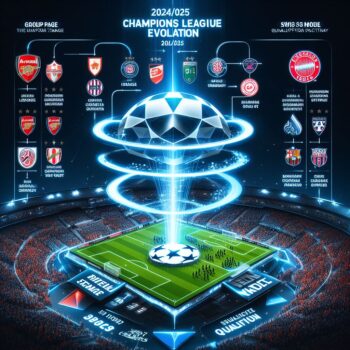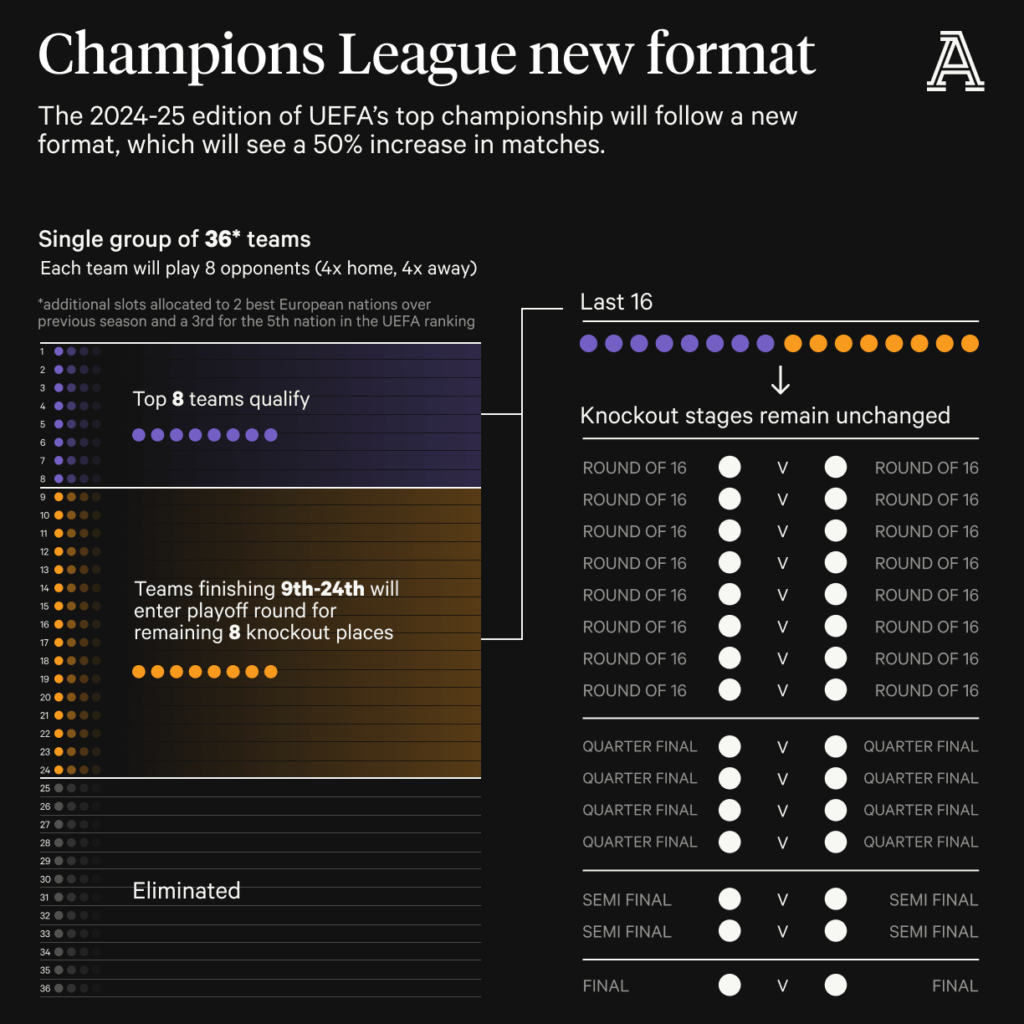The most noticeable alteration is the expansion of participating teams from 32 to 36, leading to a total of 189 matches compared to the previous 125. The traditional group stage bows out, making room for a league phase known as the Swiss model.
Each team is now guaranteed eight matches during the league phase, divided equally between home and away games. The top eight teams in the league phase will secure an automatic spot in the knockout stage, while teams finishing 9th to 24th will engage in a two-legged playoff for a chance at the last 16.
The contentious issue of qualification has undergone a shift as well. Two of the additional four slots will now be allocated to nations based on their clubs' collective performance in the preceding season. This departure from the previously criticized five-year historical coefficients approach aims to introduce a more dynamic and merit-based qualification system.
For instance, if applied to the 2021-22 season, England and the Netherlands would have been the recipients of the extra slots, showcasing a break from tradition. This change implies that the Premier League could potentially boast seven teams in the Champions League, factoring in coefficient spots and the previous season's winners.
Table 1: Changes in Champions League Format (2024-25)
| Aspect | Previous | New (2024-25) |
|---|---|---|
| Teams | 32 | 36 |
| Matches | 125 | 189 |
| Group Stage | Yes | No (Swiss Model) |
| League Phase Matches per Team | N/A | 8 (4 home, 4 away) |
| Knockout Stage Qualification | Top 8 Teams (Auto) | Top 8 Teams (Auto) |
| 9th-24th (Playoff) | 9th-24th (Playoff) | |
| Additional Qualification Slots | Historical Coeff. | Performance-based (2) |
| Same-Country Clashes | Restricted | Allowed (Early Stages) |
| Semi-Final Format | Two-Legged | Two-Legged (Currently) |
Table 2: Hypothetical Qualification Example (Based on 2021-22 Season)
| Country | Total Points Earned | Qualifying Slots (Extra 2) |
|---|---|---|
| England | X | Yes |
| Netherlands | Y | Yes |
| Others | … | No |
Note: X and Y are hypothetical total points earned by clubs from England and the Netherlands, respectively.
These tables aim to provide a concise and organized representation of the key changes and hypothetical scenarios discussed in the article.
Other modifications include allowing clubs from the same country to face each other in the early knockout stages, a departure from the current restrictions until the quarter-final. However, the two-legged semi-finals and the competition's final four retaining their existing formats for now.
UEFA President Alexander Chefferin expresses confidence in the chosen format, emphasizing its ability to strike a balance, improve competitive dynamics, and generate revenue for distribution across clubs, leagues, and grassroots football.
While the Premier League welcomes the prospect of an additional Champions League spot, not everyone is content. Concerns linger regarding UEFA's alleged favoritism towards major leagues, leaving smaller leagues dissatisfied with the redistribution of opportunities.
As the football landscape undergoes these structural adjustments, only time will reveal the true impact of these changes on the competitiveness and financial dynamics of European football. Negotiations for the revenue distribution of the 2024-27 cycle are set to commence, marking a crucial phase in the evolution of one of football's premier competitions.








